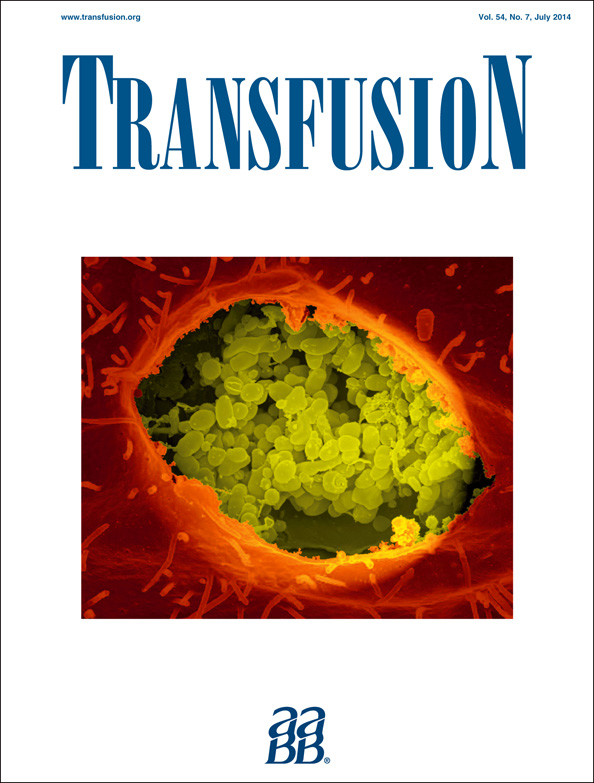Continuing Medical Education Program in Transfusion
CME Editor: Anne F. Eder, MD PhD
Authors: Vishesh Chhibber, Mindy Greene, Michelle Vauthrin, Jeff Bailey, Robert Weinstein
Article Title: Is group A thawed plasma suitable as the first option for emergency release transfusion?
If you wish to receive credit for this activity, please refer to the website: https://www.wileyhealthlearning.com/trf
Accreditation and Designation Statement:
Blackwell Futura Media Services designates this journal-based CME activity for a maximum of 1 AMA PRA Category 1 Credit™. Physicians should only claim credit commensurate with the extent of their participation in the activity. Blackwell Futura Media Services is accredited by the Accreditation Council for Continuing Medical Education to provide continuing medical education for physicians.
Activity Disclosures
No commercial support has been accepted related to the development or publication of this activity.
CME Editor: Anne F. Eder, MD, PhD has no relevant financial relationships to disclose.
Authors: The authors report no conflicts of interest or funding sources
This activity underwent peer review in line with the standards of editorial integrity and publication ethics maintained by Transfusion. The peer reviewer discloses no relevant financial relationships.
- How did the authors use group A thawed plasma in this study?
- Only after determining the anti-B isohemagglutinin titer in the unit
- For all patients regardless of their historical blood group
- For all patients within the first 24 hours of hospitalization
- For patients if their blood group was unknown
- Only if group AB thawed plasma was not available for patients with unknown blood group
- How many of the 385 patients in this study who needed emergency release group A plasma were subsequently found to be compatible with it?
- 10 (2.6%)
- 44 (11%)
- 193 (50%)
- 289 (75%)
- 325 (84%)
- How many of the 23 group B or AB patients who received incompatible group A plasma had a hemolytic transfusion reaction?
- 0
- 2
- 5
- 17
- 19
- How many of the 10 patients who received incompatible plasma demonstrated visible hemolysis in their posttransfusion specimen which the authors attributed to anti-B isohemagglutinins in the group A plasma?
- 0
- 2
- 5
- 7
- 9
- What do the authors conclude about the use of group A plasma for emergency release transfusion?
- It is an acceptable alternative to group AB plasma when the patient's blood group is unknown or compatible plasma is not available
- It is not necessary to determine the anti-B isohemagglutinin titer of the group A plasma before release
- There were no adverse outcomes attributed to incompatible plasma transfusion
- A blood sample for compatibility testing should be requested at the time of emergency release so that the patient can be switched to ABO-identical or ABO-compatible plasma
- All of the above
Instructions on Receiving Credit
For information on applicability and acceptance of continuing medical education credit for this activity, please consult your professional licensing board. This activity is designed to be completed within an hour. To successfully earn credit, participants must complete the activity during the valid credit period, which is up to two years from initial publication.
- Read the target audience, educational objectives, and activity disclosures.
- Read the article in print or online format.
- Reflect on the article.
- Access the CME Exam, and choose the best answer to each question.
- Complete the required evaluation component of the activity.




